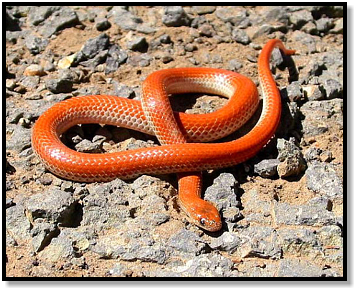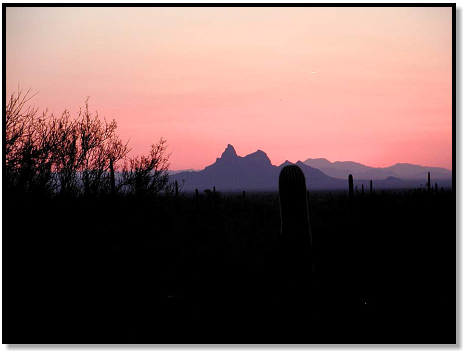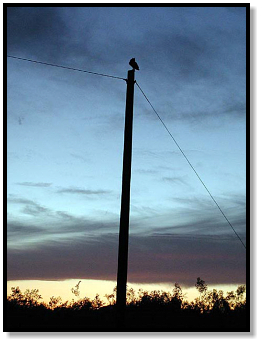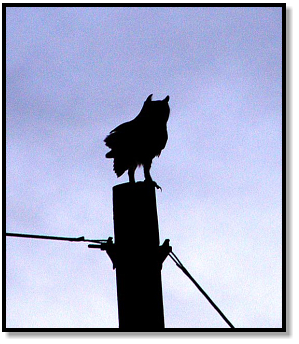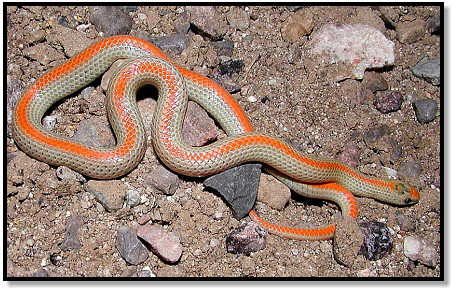

ARIZONA
April 2003

4 of 4


ARIZONA
April 2003


4 of 4
From the study site we move on to explore a new area. The terrain is more mountainous and we stop frequently
to admire the scenery, pausing to photograph the rough skyline and outbursts of cactus.
At one point while hiking up the side of a mountain I stop to take a photo. Lay my hook against a palo verde,
and right in my line of sight is this loop extending from a crevice in the rocks at the base of the tree. When snake
hunting never underestimate the power of sheer dumb luck.
Turns out to be a Tiger Rattlesnake, a new species for both Ron and myself. We’re impressed with how well its
coloration matches the surrounding rocks, and are intrigued by behavior we’ve never witnessed in a Crotalid before.
The snake rattles, of course, but also buries its head under its coils quite deliberately, the way rubber boas, ringnecks,
or other small fossorial snakes are prone to do. Even when encouraged to expose its head, the snake repeatedly
returns to that defensive posture, until eventually it overcomes its shyness.
During the last trip to AZ one of our top targets was the Long-nosed Snake. We found several DOR while road
cruising, but it wasn’t until the last night that I finally found one alive. Unfortunately, Ron had already left to return
home, so for two years he had to endure the disappointment and frustration of not seeing a live Long-nosed.
Fortunately, this time around it turns out to be the most wide-spread and frequently found snake on the roads, so Ron
finally gets the satisfaction of seeing one alive. He is now a complete and well-adjusted person.
In the course of cruising around we notice that many of the area rocks have a bluish-green tinge, a patina of
verdigris which is especially apparent the closer we come to a long, curved berm that stretches around our immediate
horizon. We approach and peer down into one of Arizona’s largest open-pit copper mines. No snakes, not even a
copperhead (sorry, couldn’t resist).
On our last day we finally have a chance to get into the field with Frank, our marvelous host and herpetologist
friend. Frank is doing research on a number of herps which live in riparian habitat, so we head to the seasonal creek
that serves as his study site, already reverting to a series of shrinking pools after spring rains have subsided.
Walking along the water course we see many lizards basking on boulders or sprinting across the wash, posing on
their stony pedestals before darting off for cover.
Probably because of the proximity to water we see more flowers and cactus in bloom around the creek bed then
anywhere else in the desert.
We see only two snakes at this study site. The first is actually found by a couple of hikers who were some
distance ahead of us. As they head back in our direction we ask if they had seen any snakes, and as a matter of fact,
they had. We’re led to a hole on the rocky side of a small ravine. Sure enough, it turns out to be my nemesis, the
evasive Gopher Snake. I climb up and try to grab it, but the snake just backs deeper into the rocks out of reach. Ah
well, there’s always next time.
The other snake is also considered common but it’s the first time Ron or I have seen a Whipsnake. These diurnal
hunters with big eyes have a well-deserved reputation for speed and nastiness. As we’re walking along a ravine, Ron
is about to climb over some rocks when right in front of his eyes he sees the snake stretched out before him. Normally
they’re gone as soon as they’re noticed, but amazingly, the snake just remains perfectly still while we fumbled for our
cameras. Decide to make a grab for him, but once again the snake surprises us by speeding off in reverse, backing
down into a hole as fast he can move forward!
Around twilight we hit the road to do some cruising. We’re driving along, staring at the pavement for any sign
of snakes, when eagle-eye Frank spots a Great Horned Owl on top of a distant telephone pole. Not sure how he
managed to keep one eye on the road and the other on the sky, but the result was an unexpected avian treat.
A little while later Frank shows us what happens when he keeps both eyes on the ground. I’m zipping along,
probably faster than I should for road cruising, when Frank says, “Snake!” and asks me to go back. I’m certain there
is nothing in the middle of the road, but Frank swears he saw something on the side.
Turns out to be tiny (how did he see it?) but very beautiful, a slender little Ground Snake. These variable
serpents come in several color phases. This one had gray sides with a stripe of highlighter-orange down the back.
Earlier in the week, at Emily’s study site, Marty showed me one that was practically all orange except for its belly; in
essence, the stripe was so broad it covered the entire back.
A few more Sidewinders and our second Arizona trip comes to a satisfying end. We had found a Gila Monster,
saw several new species, discovered some great spots, and learned more about desert herping. Now if only I can
make a first-hand find of the completely common, but all too elusive, Gopher Snake! One more reason to return . . .
.
All text copyright © Eitan Grunwald. All photographs copyright © Eitan or Ron Grunwald
except photographs by others are copyright per photo credits. All rights reserved. Terms
Ground Snake
Sonora semiannulata
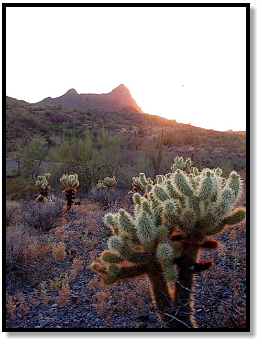
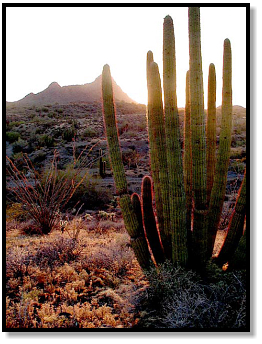
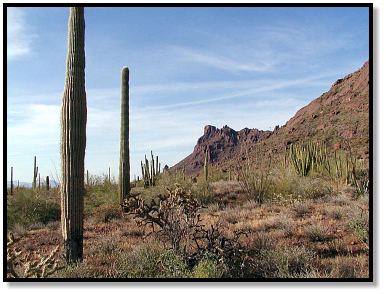
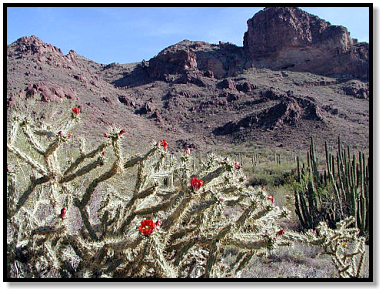
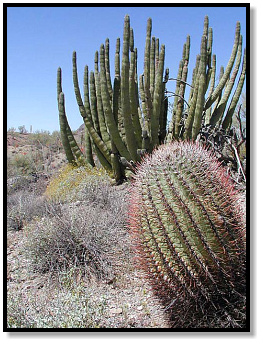
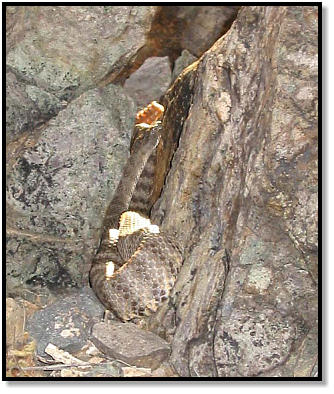
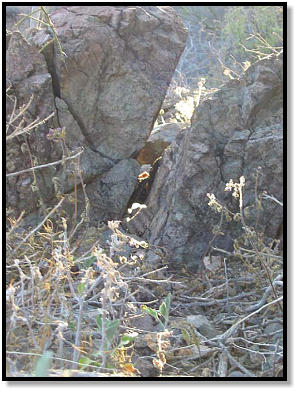
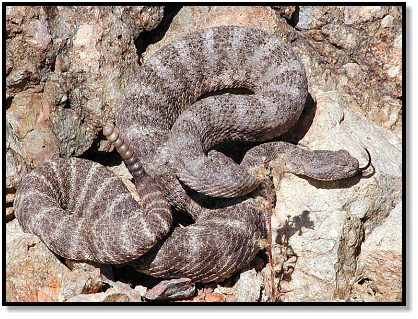
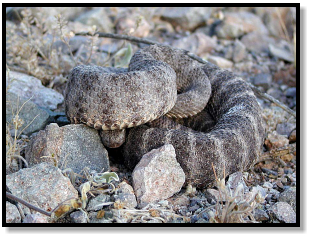
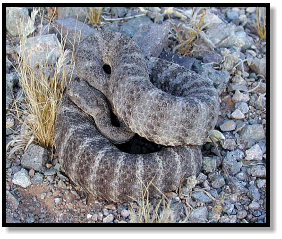
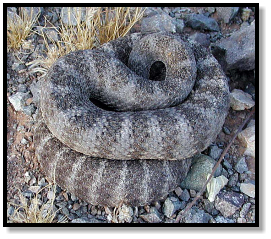
Tiger Rattlesnake
Crotalus tigris
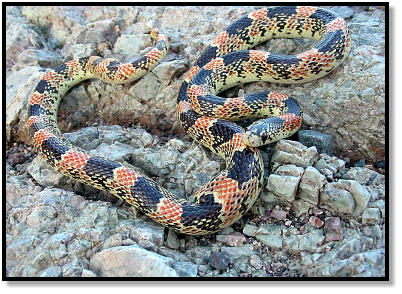
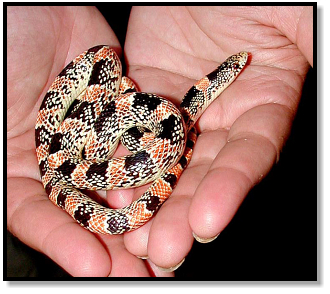
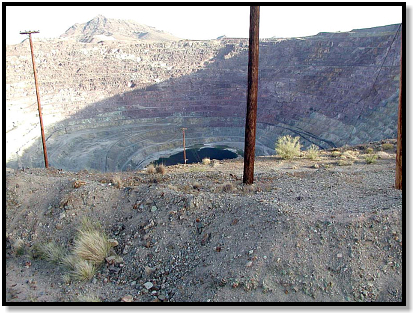
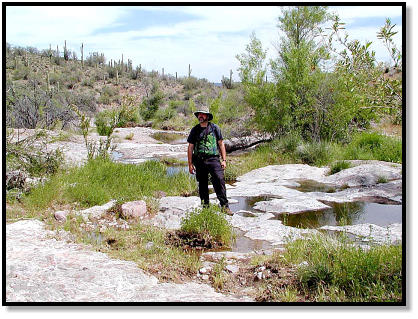
Western Long-nosed Snake
Rhinocheilus lecontei lecontei
Frank in situ
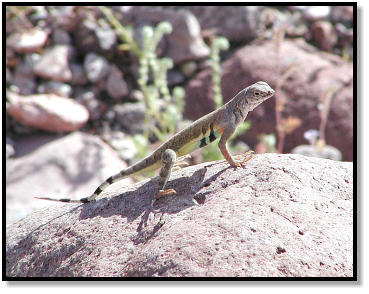
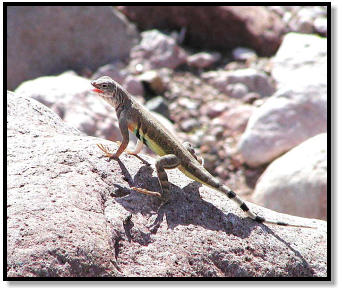
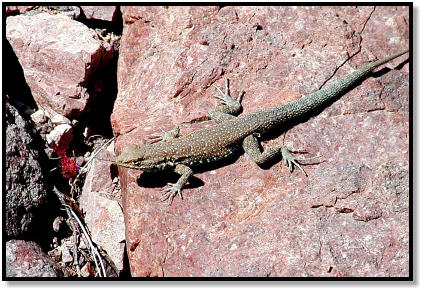
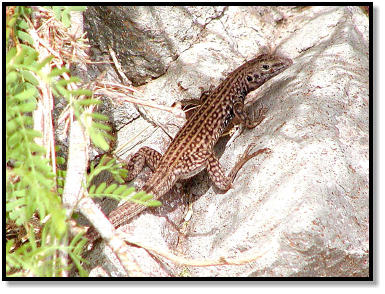
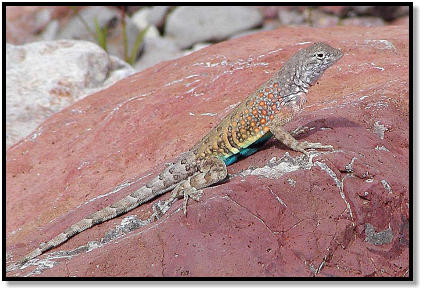
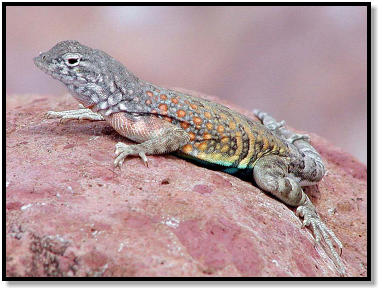
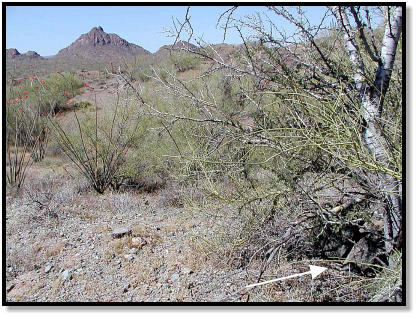
Zebra-Tail Lizard
Callisaurus draconoides
Southwestern Greater Earless Lizard
Cophosaurus texanus situlus
Gila Whiptail Lizard
Cnemidophorus flagellicaudus
Side-blotched Lizard
Uta stansburiana
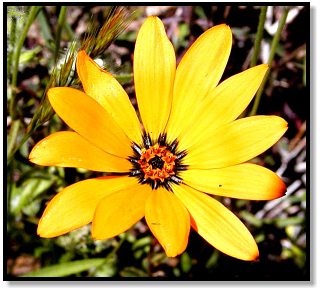
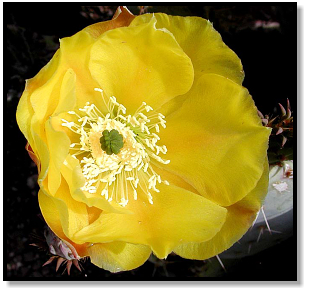
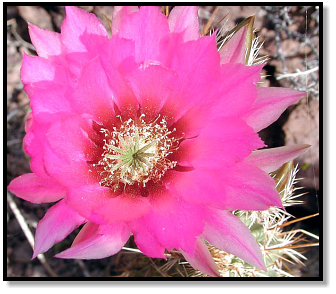
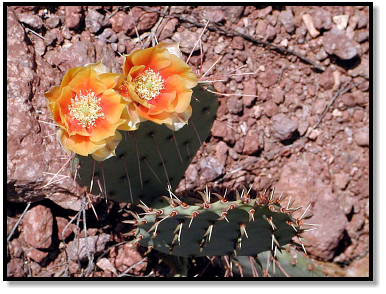
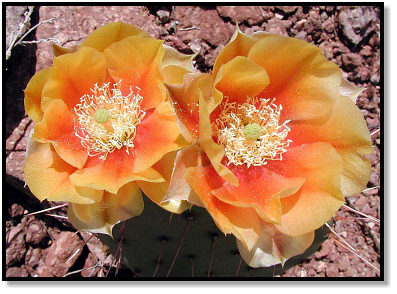
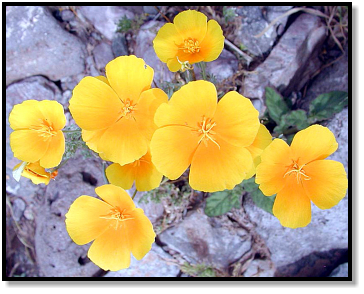
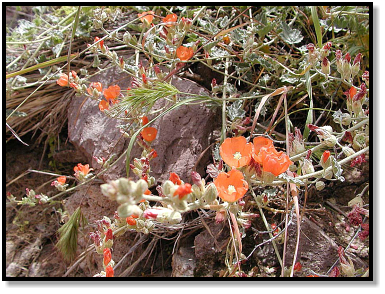
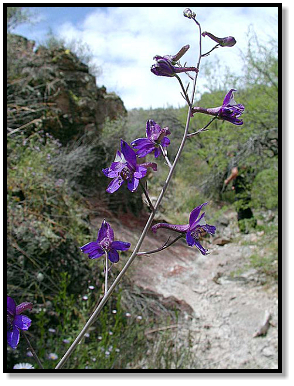
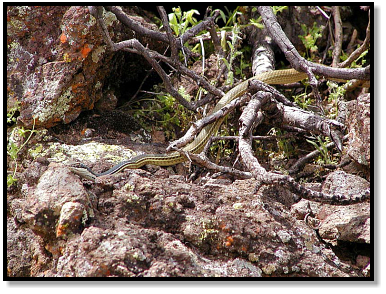
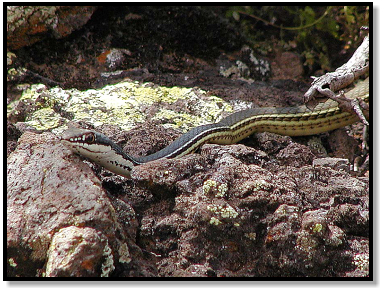
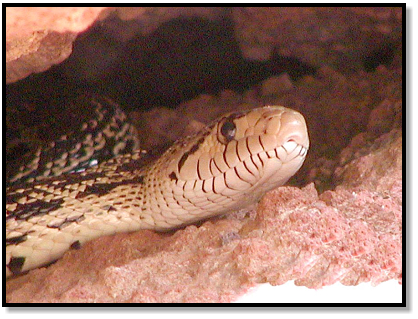
Sonoran Whipsnake
Masticophis bilineatus
